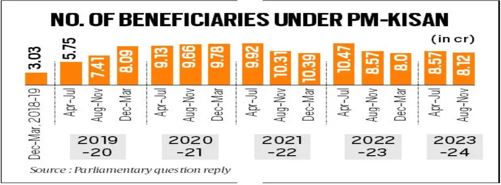PRITHvi VIgyan Scheme
To enhance the understanding of the Earth and its vital signs, the Union Cabinet recently approved the “PRITHvi VIgyan (PRITHVI)” scheme.
About the PRITHVI Scheme:
- It is an initiative of the Ministry of Earth Sciences (MoES) to enhance the understanding of the Earth and its vital signs.
- This overarching initiative, with an allocation of Rs 4,797 crore for the period 2021-26, aims to significantly enhance research, modelling, and service delivery across crucial areas like weather, climate, oceans, and the polar regions.
- The Prithvi scheme integrates five existing sub-schemes:
- Atmosphere and Climate Research-Modelling Observing Systems and Services (ACROSS)
- Ocean Services, Modelling Application, Resources and Technology (O-SMART)
- Polar Science and Cryosphere Research (PACER)
- Seismology and Geosciences (SAGE)
- Research, Education, Training, and Outreach (REACHOUT).
- These programs collectively aim to enhance our understanding of the Earth’s vital signs and translate scientific knowledge into practical services that benefit society, environment and economy.
- Objectives:
- One of the primary objectives of Prithvi is to augment and sustain long-term observations across the atmosphere, ocean, geosphere, cryosphere, and solid earth.
- This will enable recording and monitoring of the Earth System’s vital signs and changes.
- Additionally, the scheme focuses on developing predictive models for weather, ocean, and climate hazards, as well as advancing the understanding of climate change science.
- Exploration of the polar regions and high seas is another key aspect, aiming at discovering new phenomena and resources.
- The scheme also emphasises the development of technology for the exploration and sustainable harnessing of oceanic resources for societal applications.
- Various components of the PRITHVI scheme are interdependent and are carried out in an integrated manner through the combined efforts of the concerned institutes under the MoES.
